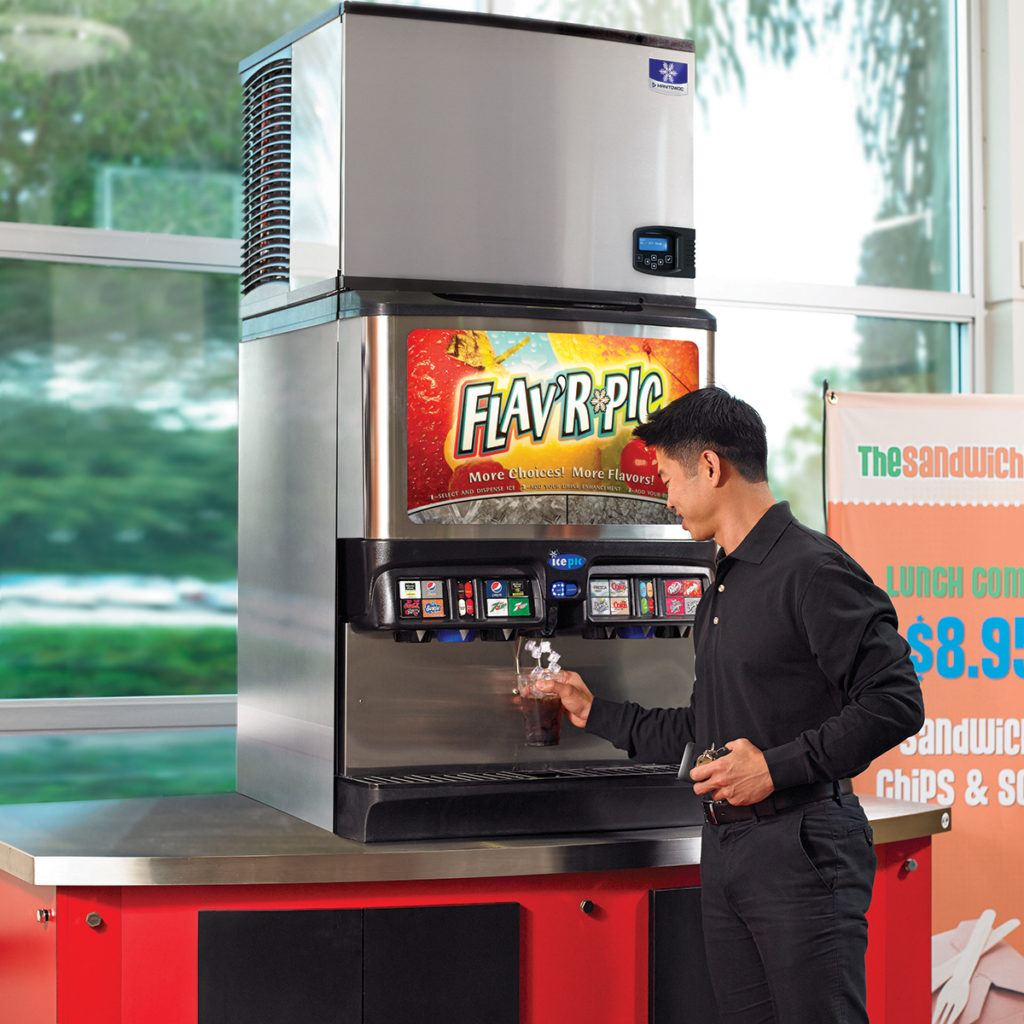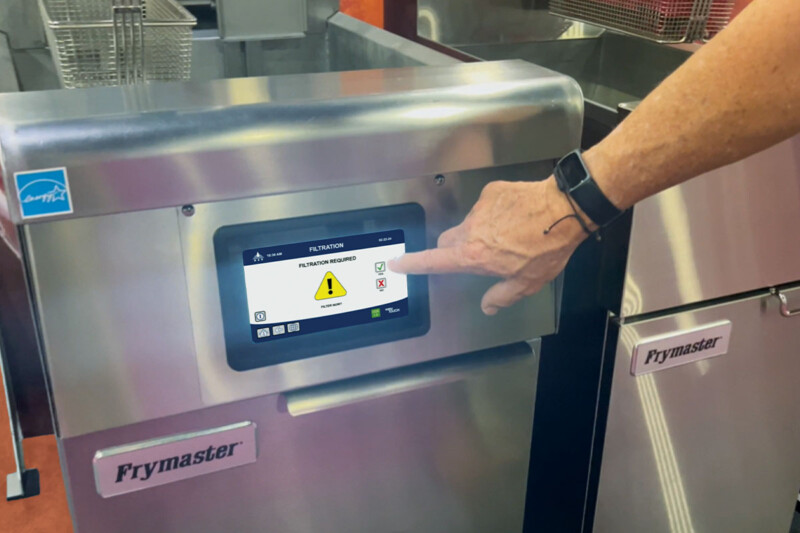
Whether you’re in a part of the country that refers to carbonated beverages as “soda” or “pop,” your dispenser systems need regular maintenance. Not keeping your dispensers clean means bad tasting drinks, an overall negative customer perception and potential safety issues with mold and bacteria growth.
Daily cleaning for some parts is a must while others require monthly or quarterly attention.
The areas with which your customers are most familiar need the most frequent cleaning. Wipe down the front of the machine each night with a cloth rag and a mixture of warm water and mild detergent. Turn the machine off before wiping it down to prevent unwanted dispensing spills. A good wipe down removes unsightly splatters and smudges, gets rid of stickiness and keeps your unit looking sparkling and sanitary.Remove the nozzles/diffusers from each beverage line and soak them overnight in a clean container filled with water and mild detergent. Use a soft-bristle brush for particularly sticky buildups. The next day, rinse them with clean water, pour sanitizing solution over them and then put them back in place. For open-24-hours locations, one maker suggests having a second set of nozzles on hand for use while the first soaks for cleaning.
Do not soak nozzles in bleach; it makes the plastic brittle and they’ll crack.
Wipe the drain pan that runs under the dispensing heads with a cloth and mild detergent. Clear the drain of any straw wrappers or other solids that can clog it. Should solid debris clog the drain to the point where you can’t pull out the blockage with your fingers, call a service professional rather than let employees take the drain apart.
Ice Bin Cleaning
Ice bins require periodic cleaning. In perfect conditions, you can do this every six months. However, real world conditions can make this a quarterly or monthly task. For example, operations that also bake sandwich bread or other flour-based goods may have high levels of yeast in the air. Left unchecked, yeast forms a fuzzy film in the bin. Chunks of film that slough off can be dispensed and end up in a customer’s beverage, creating a safety hazard, negative impression and potential grounds for a lawsuit. How often do you need to clean your ice bin?At the very least, periodically take the cover off and give it a visual inspection. Any filmy buildup, fuzzy buildup, slime, etc. means you aren’t cleaning it often enough.
Empty the bin completely of ice, wipe it down with a cloth and sanitizing solution then let it air dry.
Many operators fill their bins by hand, pulling buckets full of ice from a remote ice maker. This is a less-than-ideal scenario because it’s tough to control the bucket (is it clean and apropos to ice transfer?), the employee’s hands and the employee’s safety. They often need to climb a step ladder or step up on a chair to fill the ice receptacle atop the fountain heads. It’s dangerous, and ice tends to spill out onto the floor posing a safety risk too. Better to invest in units with integral ice makers (you can opt for remote versions if the heat and noise are issues). One maker pushes nugget ice through a tube to the bin, while the ice maker itself is remotely located.
Several manufacturers suggest looking into ozone-based sanitizing systems. Some ozonize water feeding to the ice maker, others are UV-light-based systems in the bin itself. Air recirculates over a UV light where oxygen, nitrogen and water vapor in the air create a gas containing ions, free electrons, hydroxyl radicals and ozone. This gas circulates throughout the bin, inhibiting the growth of yeast and mold-making bacteria around the clock.
Syrup Sanitation
While one manufacturer suggests cleaning syrup lines quarterly, another recommends cleaning the lines whenever syrup bag-in-boxes (BIB) are changed or at least monthly. To do this, according to one dispenser maker, disconnect the syrup lines and connectors from the BIB and place the disconnected ends in a clean bucket of fresh warm water. Activate each fountain valve to pull warm water through the line to flush out remaining syrup. Place the lines into a container of cleaning solution (1 oz. Of mild detergent to 2 gal. Of water), activate each line and let filled lines stand for 10 min. Flush the cleaning solution by putting the lines into a bucket of clean, warm water. Next, place the lines in a container of sanitizing solution, fill the lines and let them stand for 10 min. Reconnect lines to your BIB (being careful to connect each line to the right BIB) and flush the solution from the lines with syrup. Taste each drink for flavor; if one tastes off, flush the line again.
Several manufacturers suggest contracting with a trained service company for regular syrup line cleaning. While there is a cost attached, it eliminates the possibility of employee error.
Lessons To Note
What do carbonated beverage dispenser makers most often see done incorrectly? It starts with installation. Keep things neat and labeled so it’s clear which BIB is connected to which dispenser. Tubes entangled like a plate of spaghetti are asking for trouble. One manufacturer suggests having a professional installer or service company handle the installation. Bad installation could void your warranty.
Make sure your BIB are not expired. BIB come in various sizes; if your 5-gal. BIB consistently expire before they’re empty, consider going to a smaller 3-, 2- or 1-gal. BIB.
RELATED CONTENT
- Advertisement -
- Advertisement -
- Advertisement -
TRENDING NOW
- Advertisement -
- Advertisement -
- Advertisement -


